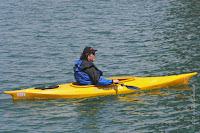Like many others, I must have crossed the Michigan Avenue bridge so many times, but this time out-of-nowhere, I remembered the Roaring Twenties.
The Roaring Twenties.. associated with phrases like, the age of contradiction, the Golden Age of mobsters, the age of Prohibition, the formation the League of Women Voters, age of the flappers, of short hair and rising hemlines.. and of the the most enduring hallmarks of the age.. the Michigan Avenue bridge, it's bridge houses and the four remarkable buildings in the four corners of the bridge, which till today, not only defines the Chicago cityscape, but make for some of the most beautiful buildings along the Chicago River..
- Michigan Avenue bridge: 1920
- Wrigley Building: North Tower: 1921, South Tower:1924
- London Guarantee Building: 1923
- Tribune Tower: 1925
- 333 North Michigan Avenue: 1928..
Michigan Avenue bridge.. click here..
North of the Michigan Avenue bridge, are Wrigley bldg. [west] and Tribune Tower [east]
Wrigley building..
Address: 410 N. Michigan Avenue
Year completed: 1924
Architect: Graham, Anderson and Probst..
It consists of two structures,
South Tower completed in 1921, and...
North Tower completed in 1924..
It was built to house the corporate headquarters of the Wrigley Company. When it was completed, there were no major office buildings north of the Chicago River and the Michigan Avenue Bridge..
Tribune Tower..
Address: 435 N. Michigan Ave.
Year completed: 1925
Architect: Raymond M. Hood and John Mead Howells ...
Date Designated a Chicago Landmark: February 1, 1989..
The Tower design was the result of an international competition for "the most beautiful office building in the world," held in 1922 by the Chicago Tribune newspaper.
For more.. click here..
South of the Michigan Ave. bridge are London Guarantee building [west] and 333 N Michigan Avenue [east]..
London Guarantee building..
Address: 360 N. Michigan Ave...
Year completed: 1923
Architect: Alfred S. Alschuler ...
Date Designated a Chicago Landmark: April 16, 1996..
It is built at the site of Fort Dearborn..
Fort Dearborn - a U.S. Military Garrison - was the first government building to be built in Chicago. The fort was named for U.S. Secretary of War, Henry Dearborn. Its purpose was to protect the settlers against attacks by Native Americans.
333 N Michigan Avenue..
Year completed: 1928
Architect: Holabird & Roche/Holabird & Root..
Relief panel sculptor: Fred M. Torrey.
Each depict major event in Chicago history..
Date Designated a Chicago Landmark: February 7, 1997..
For more.. click here..
Some other buildings in the Roaring Twenties phase include:
- 35 E Wacker Drive: 1927
- Mather Tower: 1928
- The Carbon & Carbide building: 1929
- Intercontinental Chicago Hotel: 1929
- Civic Opera building: 1929
- Riverside Plaza: 1929
And then we were hit by the Great Depression!!!





















































